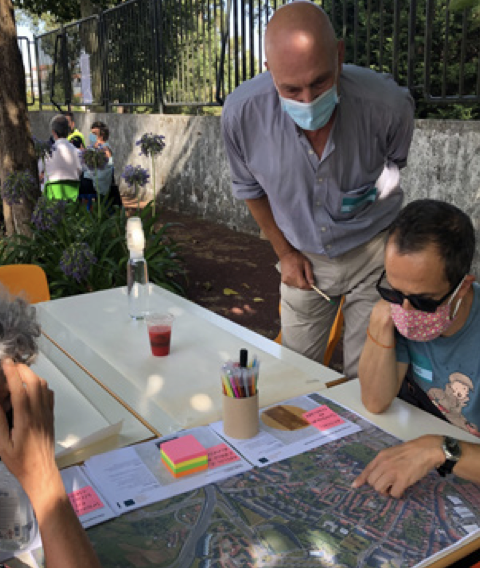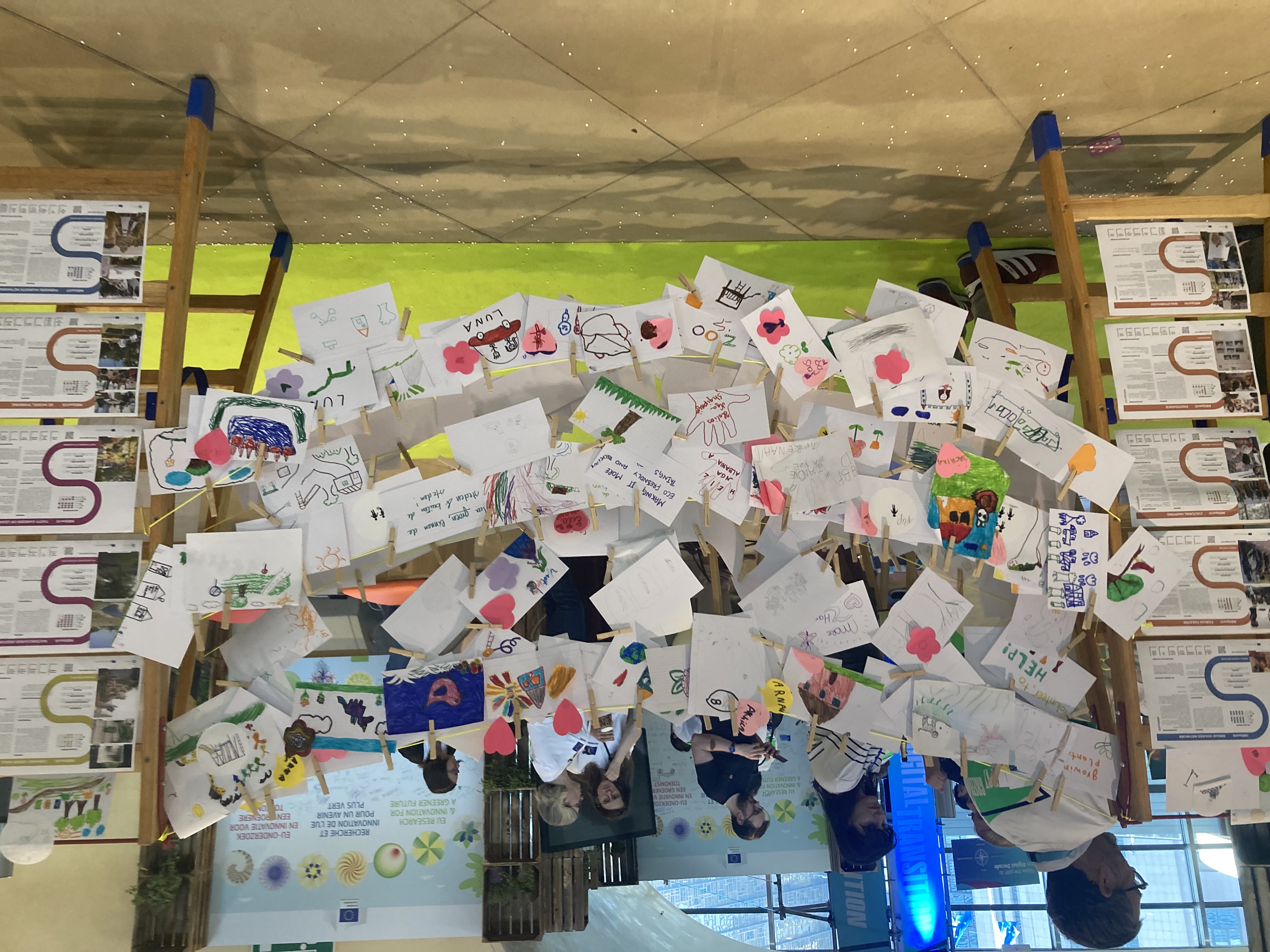Design Thinking
CHALLENGES ADDRESSED
Score impact
Nature
Wellbeing
Health
Mobility
Participation
Economy
DESCRIPTION
Design Thinking is founded on the ability to combine empathy for the context of a problem, creativity in generating ideas, insights and solutions, and rationality to analyze and match solutions to the context. Design Thinking processes are at the same time analytical and empathic, rational and emotional, methodical and intuitive, often tackle ill-defined problems where the use of creative thinking abilities is fundamental to first a correct problem finding.
Design Thinking is human centered and is based on understanding the needs and motivations of people. And it is optimistic; it believes that there is always a solution to be found. From problem finding to problem solving.
By using Gamification, Serious Games, Senses and Dreams, the Design thinking tools allows people to give firsthand deeper information that it is crucial to complement and simultaneously cross-validate other sources of codiagnostic gathered through other methods and tools.

[PDF Download] Design Thinking
Design Thinking is founded on the ability to combine empathy for the context of a problem, creativity in generating ideas, insights and solutions, and rationality to analyze and match solutions to the context. Design Thinking processes are at the same time analytical and empathic, rational and emotional, methodical and intuitive, often tackle ill-defined problems where the use of creative thinking abilities is fundamental to first a correct problem finding.
Design Thinking is human centered and is based on understanding the needs and motivations of people. And it is optimistic; it believes that there is always a solution to be found. From problem finding to problem solving.
By using Gamification, Serious Games, Senses and Dreams, the Design thinking tools allows people to give first- hand deeper information that it is crucial to complement and simultaneously cross-validate other sources of co- diagnostic gathered through other methods and tools.
INNOVATION ASPECT
- It is a method that engages and involves citizens in co-creation of value approach. Specially focused on supporting the co-diagnostic and co-design stages by listening and dialoguing with the citizens and observing the neighborhoods. The Design Thinking designed tools allow the citizens and stakeholders to express their emotions, feelings, perceptions and behaviors concerning the territories and their community.
REPLICATION AND SCALABILITY
- The Design Thinking method, tools can be used in community workshops in any territorial context, process stage, actions and activities that need to gather deep information for problem finding or new fresh ideas for problem solving and should host max. 25 participant with one facilitator. If you have more, then you should create more groups. In URBiNAT, it was used in several cities with different contexts and goals, demonstrating its replicability and scability.
PARTICIPATION PROCESS

-
1
CO-DIAGNOSTIC
It supports the engagement, motivations and the goal of gathering deep, personal and collective information from the local citizens and stakeholders of participatory based projects, as URBiNAT. Depending on the goal, participants share emotions, feelings, express needs, identify opportunities, experiences, narratives, perceptions, behaviors and dreams for their neighborhoods. It was associated with different tools such as cultural mapping, walkthrough, photovoice and community workshops.
-
2
CO-SELECTION
It supports the co-selection of NBS inspired in the URBiNAT NBS catalogue by stimulating thinking in all directions and adapt to local context.
-
3
CO-DESIGN
Used the online meetings and workshops for the cocreation of new citizens NBS’s. The diverge / converge and the analyses / synthesis framework are fundamental support the ideation step. Also relevant, adapted tools of consensus generation “Delphi” and approximation of arguments and viewpoints the “Triz”.
-
4
CO-IMPLEMENTATION & CO-MONITORING
It will support the implementation of cultural and solidarity economy NBS. It can be particularly relevant to emerging issues during monitoring for the improvement of implemented solutions and the overall evaluation of the transformation of public life.
BEST PRACTICES and REFERENCES
LINKS:
URBiNAT Design Thinking tools in Porto, Nantes and Sofia;
Design Thinking tools used in the Porto co-diagnostic stage – Mapping in Schools and Kick-off meeting;
Design Thinking tools used in the Porto Online co-design – Ideation, design and validation Workshops.












